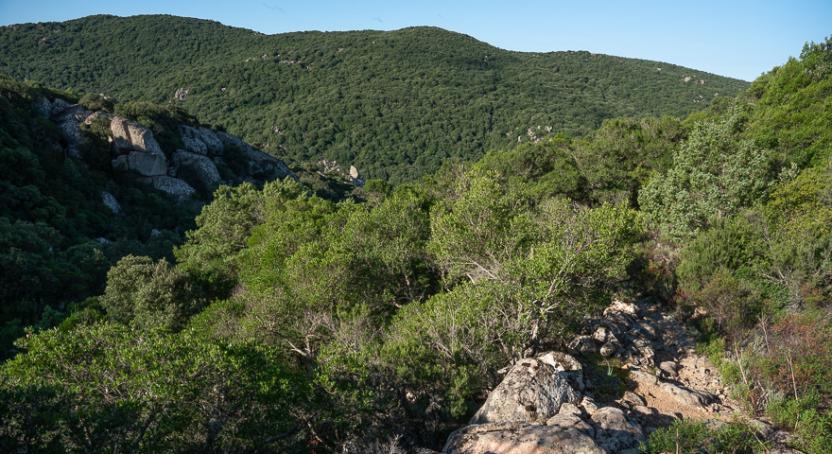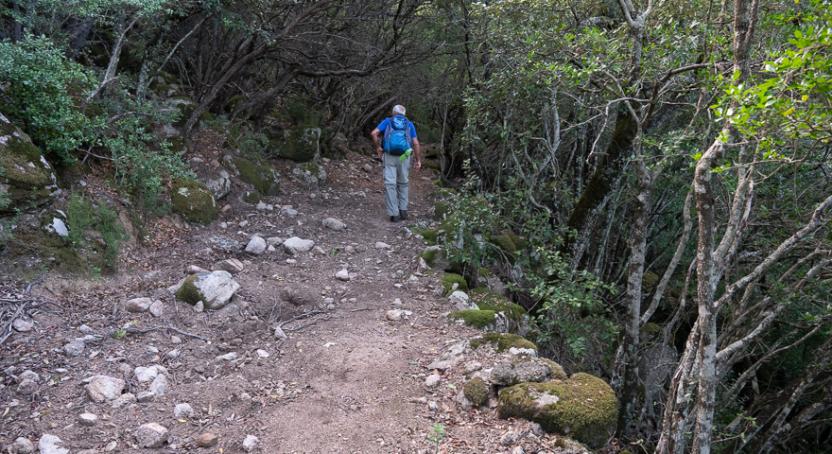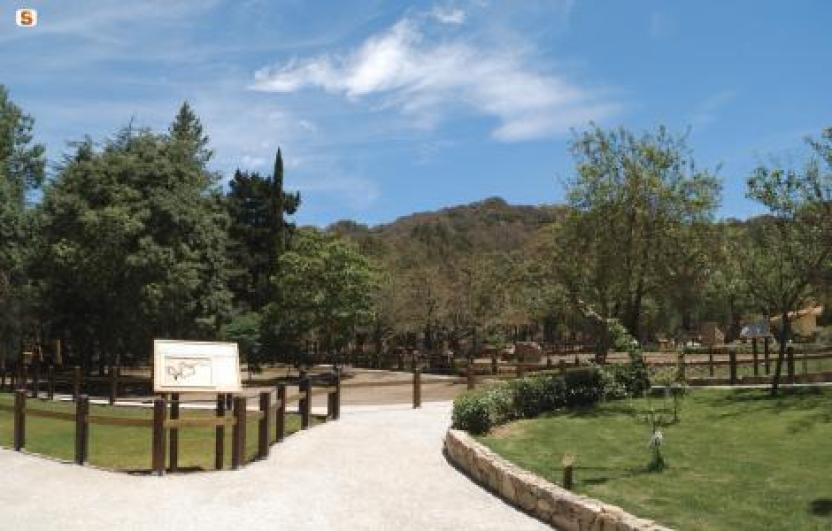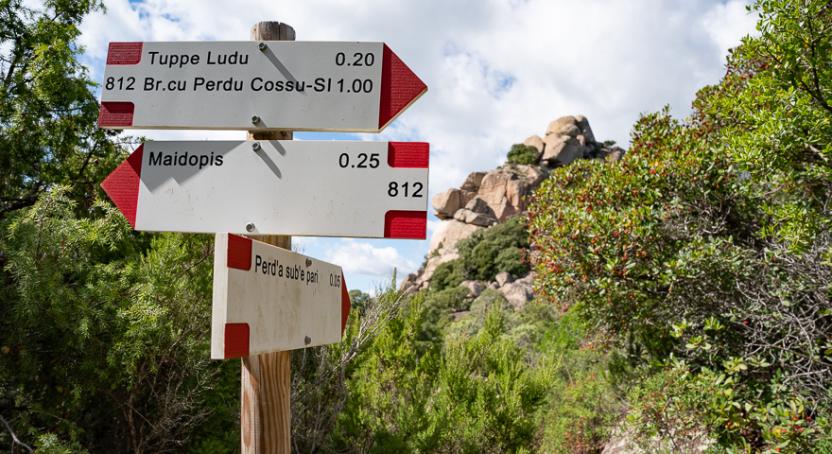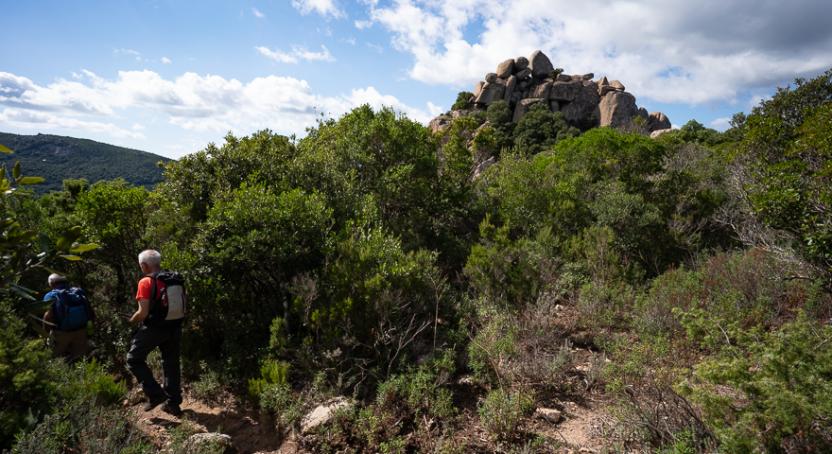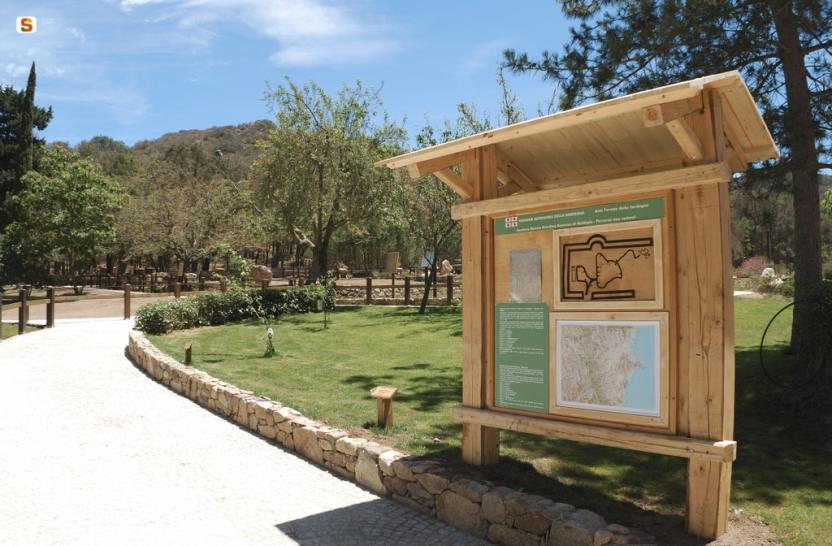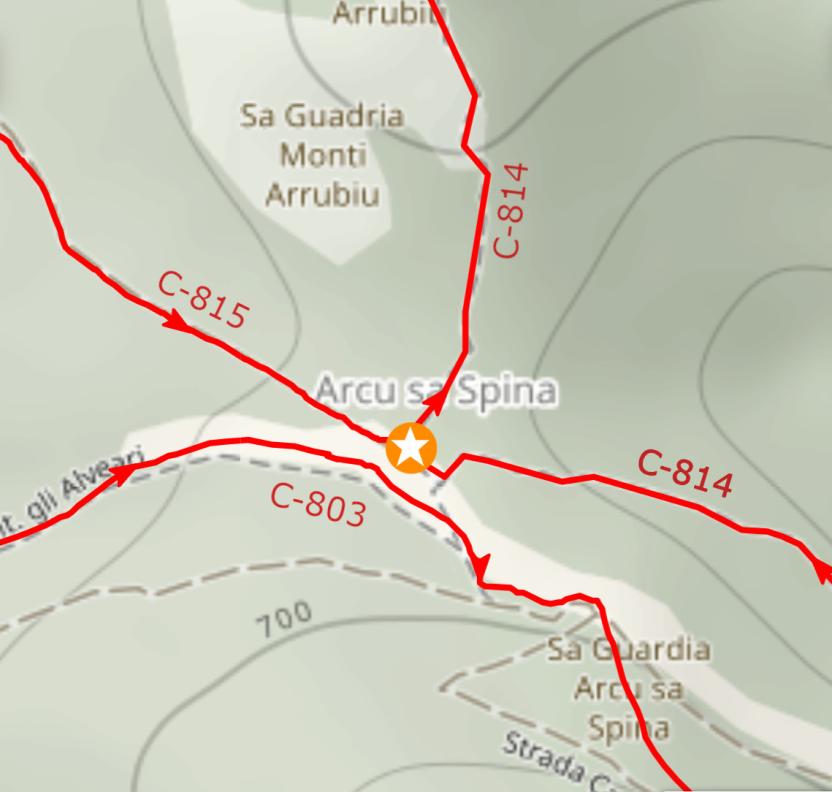The area is located in the south-eastern sector of Sardinia, between the historical regions of Sarrabus and Campidano, and administratively speaking, lies within the municipalities of Burcei, Sinnai, San Vito, Dolianova, Settimo San Pietro, Soleminis, Castiadas and Muravera.
The climate is typically Mediterranean, characteristic of the southern regions of Sardinia, with long, hot dry summers that last for about four months, while the winter is mild with moderate rainfall. The vegetation of the forest complex of Settefratelli is quite varied, with the coastal strip featuring typical Mediterranean maquis with mastic (Pistacia lentiscus L.), the Phoenician juniper (Juniperus phoenicea L.), tree spurge (Euphorbia dendroides L.), sporadic olive tree specimens (Olea europea L. var. sylvestris Brot.)
and narrow-leaved mock privet (Phyllirea angustifolia L.), while in inland areas the most widespread forest species is the holm oak together with strawberry tree, broad-leaved phyllirea, heather and viburnum. Cork oaks are also found at medium-low elevations.
Pulvinus vegetation characterises the highest ridges, with Corsican broom, thyme and lavender, with riparian vegetation along streams and rivers including oleander, willows and alder. Especially in the State-owned forests of Settefratelli and Castiadas, the territory represents a natural habitat of Sardinian deer which have found a safe refuge here and are protected thanks to the conservation work of the Forestry Authority. In addition to deer, the forests are home to numerous other animal species such as eagle, marten, Sardinian hare, wild boar, partridge and fox.
Il territorio si trova nel settore sud-orientale della Sardegna, tra le regioni storiche del Sarrabus e del Campidano, ed è compreso, amministrativamente, nei territori dei Comuni di Burcei, Sinnai, San Vito, Dolianova, Settimo San Pietro, Soleminis, Castiadas e Muravera.
Il clima è tipicamente mediterraneo, caratteristico delle zone meridionali sarde, con estati calde, lunghe ed asciutte che si protraggono per circa quattro mesi, mentre l’inverno è mite e moderatamente piovoso.
La vegetazione del complesso forestale di Settefratelli è piuttosto varia presentandosi sulla fascia litoranea con la tipica macchia a lentischio (Pistacia lentiscus L.), col ginepro fenicio (Juniperus phoenicea L.) con l’euforbia arborea (Euphorbia dendroides L.), con sporadici esemplari diolivastro (Olea europea L. var. sylvestris Brot.) e con la fillirea angustifolia (Phyllirea angustifolia L.), mentre nelle aree interne la formazione forestale maggiormente diffusa è la lecceta associata a seconda delle situazioni al corbezzolo, alla fillirea latifoglia, all’erica e al viburno. A quote medio basse si trova anche la sughera. Sui crinali più alti si trova una vegetazione a pulvino con ginestra corsa, timo, lavanda, mente lungo gli alvei dei torrenti la vegetazione riparia a oleandro, salici e ontano. Il territorio costituisce, soprattutto nelle Foreste Demaniali dei Settefratelli e di Castiadas, uno degli areali di eccellenza del cervo sardo che qui ha trovato rifugio ed è protetto e conservato grazie all’azione dell’Ente Foreste.
Oltre al cervo, le foreste ospitano numerose altre specie animali come l’aquila, la martora, la lepre sarda, il cinghiale, la pernice e la volpe.



